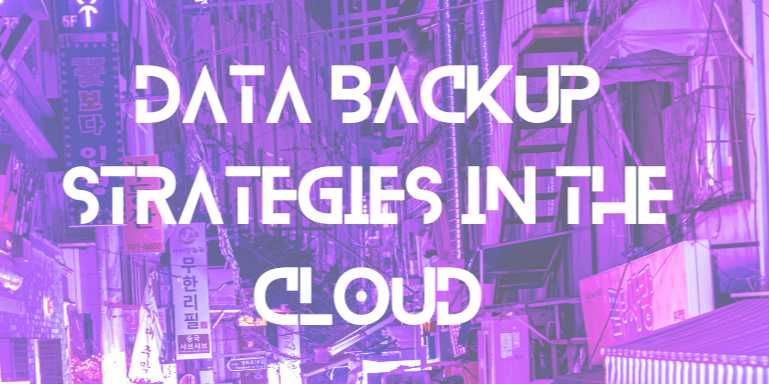Data Backup Strategies in the Cloud

📕 Chapter 5: Testing, Optimization & Cost Control
🧪 Section 1: Backup
Testing & Validation
Regular testing ensures that backups are reliable and
recoverable.
🔹 Importance of Testing
- Data
Integrity: Verifies that backups are complete and uncorrupted.
- Disaster
Preparedness: Ensures quick recovery during unforeseen events.
- Compliance:
Meets regulatory requirements for data protection.
🔹 Testing Methods
- Automated
Testing: Utilize tools that automatically verify backup integrity.
- Manual
Restoration: Periodically restore data to test recovery procedures.
- Checksum
Verification: Use checksums to detect data corruption.Wikipedia
🔹 Tools for Validation
- Veeam
SureBackup: Automates backup verification processes.
- AWS
Backup Vault Lock: Provides immutable backups to prevent tampering.
- Azure
Backup Reports: Offers insights into backup health and status.arXiv+1Harness.io+1TierPoint, LLC+10TechRadar+10Wikipedia+10
⚙️ Section 2: Performance
Optimization
Optimizing backup performance ensures efficient use of
resources and faster recovery times.
🔹 Strategies for
Optimization
- Incremental
Backups: Only back up changed data to save time and storage.
- Compression:
Reduce backup size to save storage space.
- Deduplication:
Eliminate redundant data to optimize storage.
🔹 Scheduling
- Off-Peak
Hours: Schedule backups during low-usage periods to minimize impact.
- Staggered
Backups: Avoid simultaneous backups to reduce load.
🔹 Monitoring Tools
- AWS
CloudWatch: Monitor backup performance metrics.
- Azure
Monitor: Track backup operations and performance.
- Google
Cloud Operations Suite: Provides observability into backup processes.Informa TechTarget+2TechRadar+2nOps+2Densify+16arXiv+16TechRadar+16
💰 Section 3: Cost Control
Strategies
Effective cost management ensures that backup solutions are
financially sustainable.
🔹 Storage Tiering
|
Storage Tier |
Use Case |
Cost Implication |
|
Hot Storage |
Frequently accessed
data |
Higher cost |
|
Cool Storage |
Infrequently
accessed data |
Moderate cost |
|
Archive Storage |
Rarely accessed,
long-term storage |
Lowest cost |
🔹 Lifecycle Policies
- Automated
Transitions: Move data to lower-cost storage tiers over time.
- Retention
Policies: Define how long data should be retained to avoid unnecessary
storage costs.CloudZero+1Google Cloud+1
🔹 Rightsizing Resources
- Analyze
Usage Patterns: Adjust storage and compute resources based on actual
usage.
- Eliminate
Idle Resources: Identify and remove unused resources to cut costs.
🔹 Cost Monitoring Tools
- AWS
Cost Explorer: Visualize and analyze AWS spending.
- Azure
Cost Management: Monitor and control Azure expenses.
- Google
Cloud Billing Reports: Track and manage Google Cloud costs.nOps+1Amazon Web Services, Inc.+1Densify
📋 Summary
Regular testing, performance optimization, and cost control
are critical components of a robust cloud backup strategy. By implementing the
practices outlined in this chapter, organizations can ensure data reliability,
efficient operations, and financial sustainability.
FAQs
❓1. What are the main advantages of cloud backup over traditional backup?
Answer:
Cloud backups offer scalability, automation, geo-redundancy,
and cost-effectiveness. Unlike traditional tapes or on-premise storage,
cloud solutions allow real-time access, faster recovery, and lower maintenance
overhead.
❓2. What is the 3-2-1 backup rule, and how does it apply to the cloud?
Answer:
The 3-2-1 rule means:
- Keep
3 copies of your data
- On 2
different media
- With
1 off-site In cloud terms, this may include production data, a
version in cloud object storage, and a copy in another region or cold
archive tier like AWS Glacier.
❓3. What’s the difference between full, incremental, and differential backups?
Answer:
- Full:
Copies all data.
- Incremental:
Copies only data changed since the last backup.
- Differential:
Copies all data changed since the last full backup. Cloud systems
often combine these for storage efficiency and restore speed.
❓4. How do RTO and RPO influence cloud backup planning?
Answer:
- RTO
(Recovery Time Objective) defines how fast data must be restored.
- RPO
(Recovery Point Objective) defines how much data loss is acceptable.
Lower RTO/RPO requires more frequent backups and faster-access storage
(e.g., hot tiers).
❓5. How secure is data stored in the cloud?
Answer:
Top cloud providers offer end-to-end encryption, access control (IAM),
and compliance standards (e.g., GDPR, HIPAA, ISO 27001). Users must
still configure security properly, including encryption, access policies, and
audit logging.
❓6. Can I automate my cloud backups?
Answer:
Yes. Most platforms (AWS, Azure, GCP) support:
- Scheduled
backups
- Lifecycle
rules
- Backup
orchestration tools
- Event-driven
triggers using Lambda, Cloud Functions, etc.
❓7. How much does cloud backup cost?
Answer:
Costs vary based on:
- Storage
class (e.g., hot vs. cold)
- Data
volume
- Retention
period
- Egress
fees (for restores or cross-region) Using tiered storage and
lifecycle rules helps reduce long-term costs.
❓8. What tools or services are recommended for cloud backup?
Answer:
Popular options include:
- AWS:
AWS Backup, S3 Glacier, EBS Snapshots
- Azure:
Azure Backup Vault, Blob Archive
- GCP:
Cloud Storage Nearline/Coldline, Filestore Snapshots
- 3rd
party: Veeam, Commvault, Backblaze, Wasabi
❓9. How often should I test my backups?
Answer:
Monthly or quarterly tests are recommended to:
- Verify
data integrity
- Ensure
recovery processes work
- Train
response teams Automated DR tests are possible via scripts or CI/CD
integrations.
❓10. What happens if my cloud provider experiences an outage?
Answer:
Use multi-region or multi-cloud backup strategies to mitigate
this. Store at least one backup copy in a different region or on a different
provider to maintain business continuity.



Comments(0)